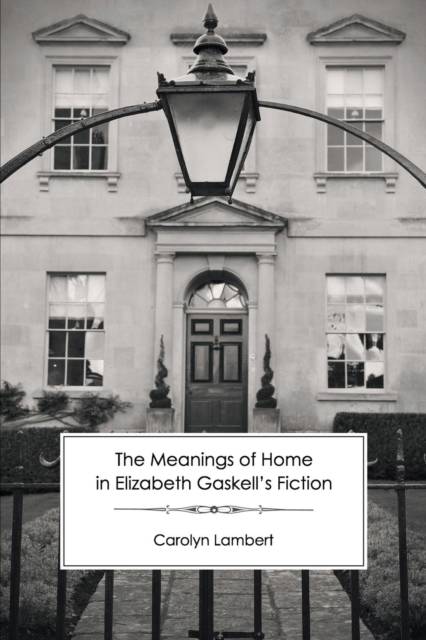
Door een staking bij bpost kan je online bestelling op dit moment iets langer onderweg zijn dan voorzien. Dringend iets nodig? Onze winkels ontvangen jou met open armen!
- Afhalen na 1 uur in een winkel met voorraad
- Gratis thuislevering in België vanaf € 30
- Ruim aanbod met 7 miljoen producten
Door een staking bij bpost kan je online bestelling op dit moment iets langer onderweg zijn dan voorzien. Dringend iets nodig? Onze winkels ontvangen jou met open armen!
- Afhalen na 1 uur in een winkel met voorraad
- Gratis thuislevering in België vanaf € 30
- Ruim aanbod met 7 miljoen producten
Zoeken
€ 27,45
+ 54 punten
Uitvoering
Omschrijving
In this beautifully written study, Carolyn Lambert explores the ways in which Elizabeth Gaskell challenges the nineteenth-century cultural construct of the home as a domestic sanctuary offering protection from the external world. Gaskell's fictional homes often fail to provide a place of safety: doors and windows are ambiguous openings through which death can enter, and are potent signifiers of entrapment as well as protective barriers. The underlying fragility of Gaskell's concept of home is illustrated by her narratives of homelessness, a state she uses to represent psychological, social, and emotional separation. By drawing on novels, letters and non-fiction writings, Lambert shows how Gaskell's detailed descriptions of domestic interiors allow for nuanced and unconventional interpretations of character and behaviour, and evince a complex understanding of the significance of home for the construction of identity, gender and sexuality. Lambert's Gaskell is an outsider whose own dilemmas and conflicts are reflected in the intricate and multi-faceted portrayals of home in her fiction.
Specificaties
Betrokkenen
- Auteur(s):
- Uitgeverij:
Inhoud
- Aantal bladzijden:
- 238
- Taal:
- Engels
Eigenschappen
- Productcode (EAN):
- 9781906469474
- Verschijningsdatum:
- 24/10/2013
- Uitvoering:
- Paperback
- Formaat:
- Trade paperback (VS)
- Afmetingen:
- 152 mm x 229 mm
- Gewicht:
- 322 g

Alleen bij Standaard Boekhandel
+ 54 punten op je klantenkaart van Standaard Boekhandel
Beoordelingen
We publiceren alleen reviews die voldoen aan de voorwaarden voor reviews. Bekijk onze voorwaarden voor reviews.











